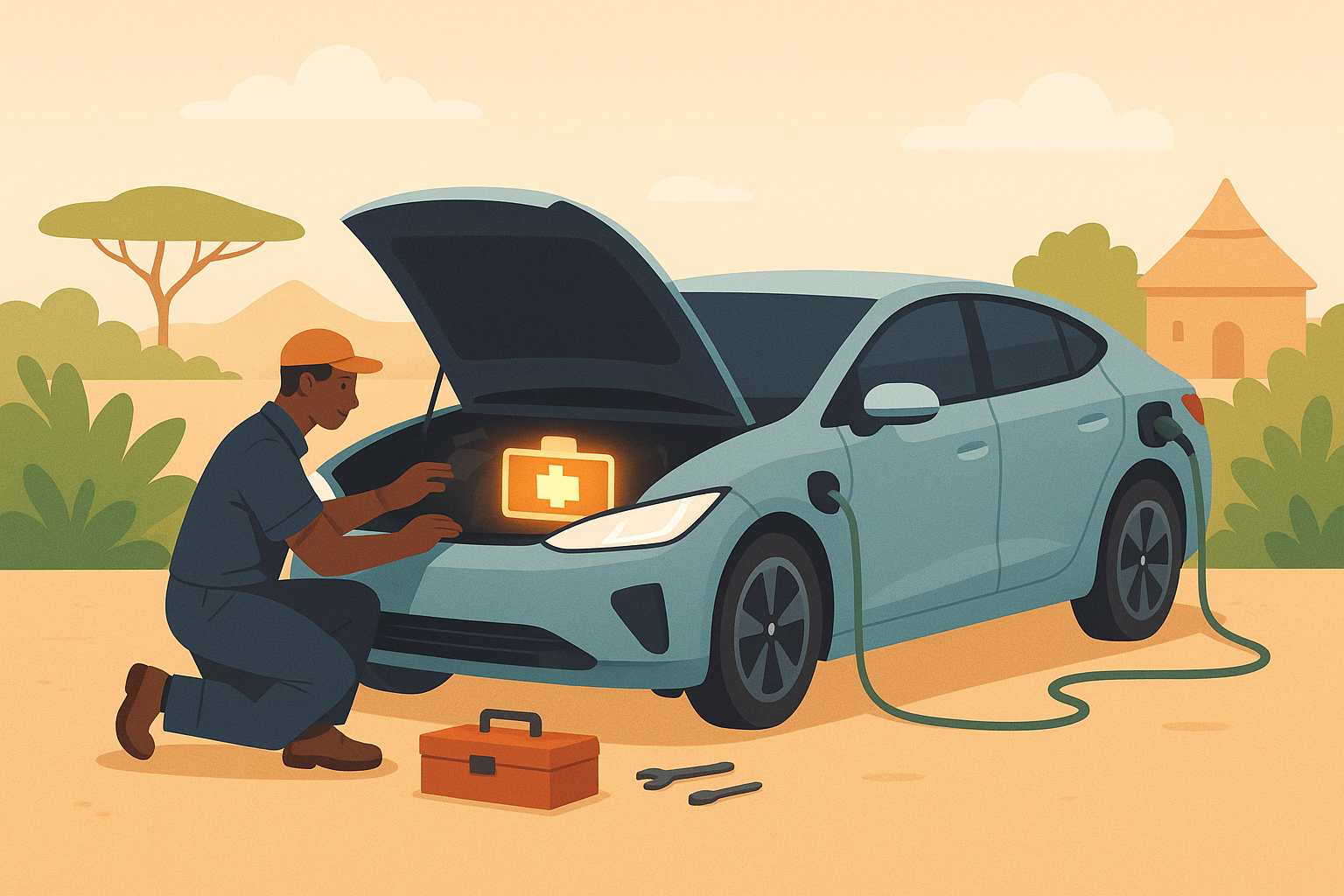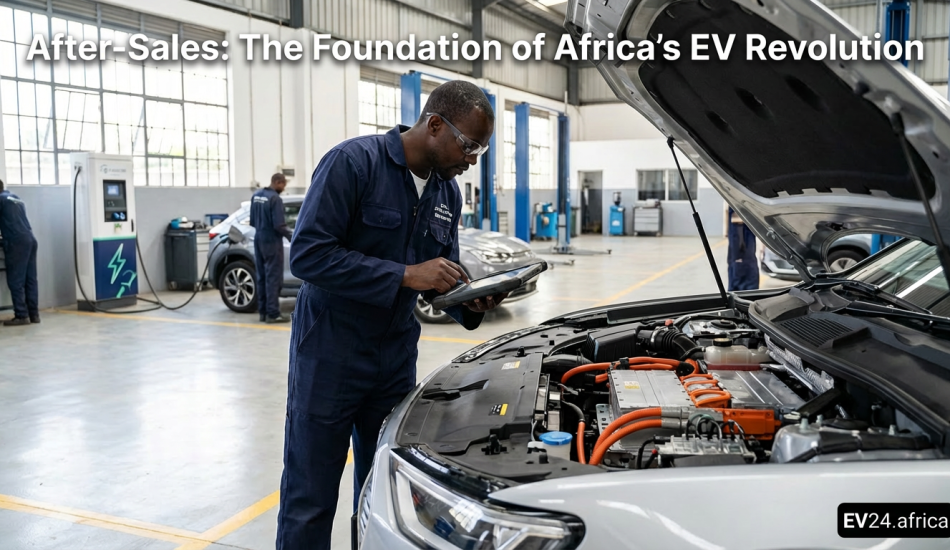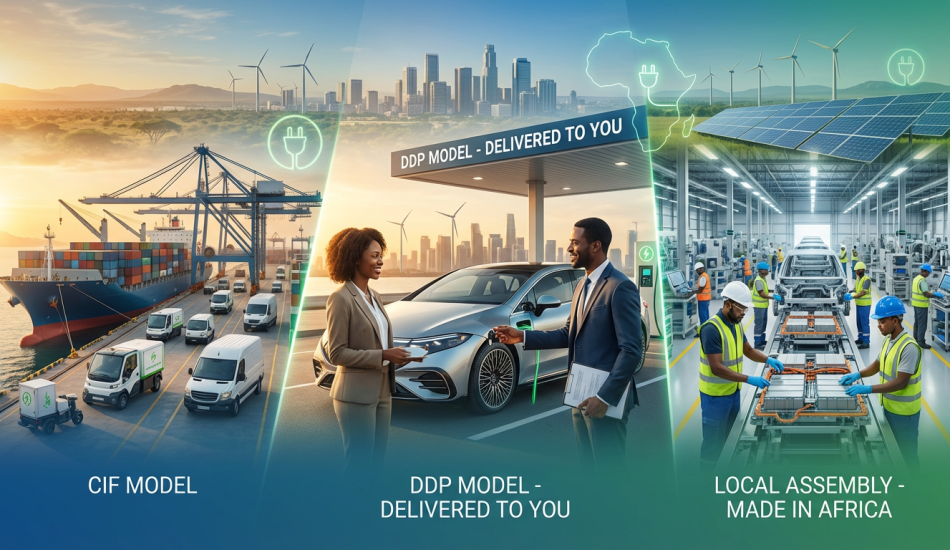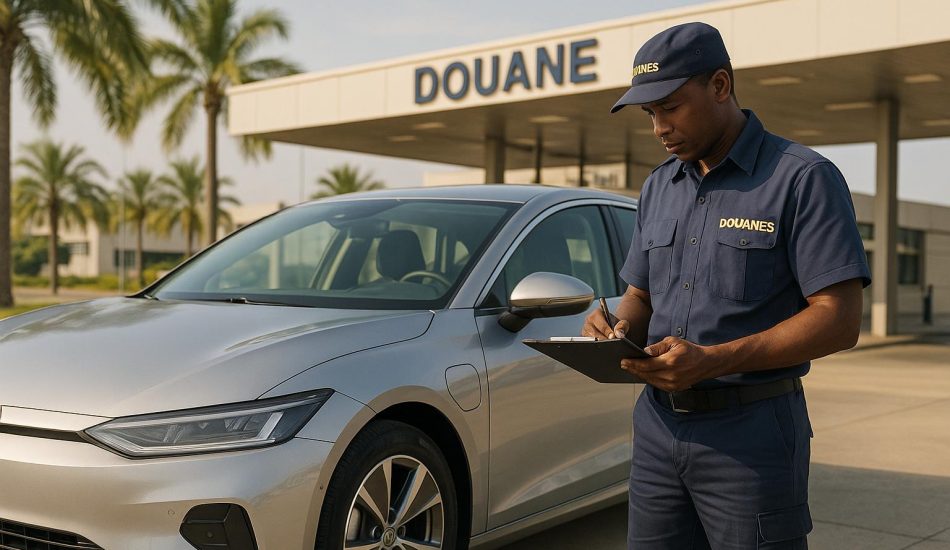
Electric vehicles (EVs) cost less to maintain than petrol cars in Africa. On average, EVs cost $0.061 per mile, while petrol cars cost $0.101 per mile. That’s a 40% reduction, saving drivers up to $1,200 annually for 30,000 miles driven. EVs avoid expensive oil changes, spark plug replacements, and fuel system servicing, thanks to their simpler design and fewer moving parts.
Key Points:
- EV Maintenance Costs: 50–60% lower due to fewer moving parts and regenerative braking.
- Petrol Car Costs: Higher due to frequent oil changes, part replacements, and complex systems.
- Challenges for EVs in Africa: Limited access to skilled technicians and battery care in extreme climates.
- Long-Term Savings: Over 90,000 miles, EVs like the Volvo XC40 Recharge save 52% in servicing costs compared to petrol models.
Quick Comparison
| Cost Component | EVs | Petrol Cars |
|---|---|---|
| Per Mile Maintenance | $0.061 | $0.101 |
| Annual Maintenance (30k miles) | $1,830 | $3,030 |
| Key Maintenance Needs | Tire rotation, brake checks | Oil changes, spark plugs, filters |
| Long-Term Costs | Lower due to fewer repairs | Higher due to engine wear |
Switching to EVs can save African drivers money, but infrastructure and technician availability remain challenges. Learn more about these factors in the full article.
Electric Vehicle Repair and Maintenance Ecosystem in Africa …
1. EV Maintenance Costs
Electric vehicles (EVs) are easier and cheaper to maintain compared to traditional gas-powered cars. Thanks to their simpler design and fewer moving parts, EVs cost 50–60% less to maintain, according to fleet data. This makes them particularly appealing in regions like Africa, where tough conditions and limited service options can drive up maintenance costs for conventional vehicles.
"While internal combustion engines require regular checks to change the oil and oil filter, for chain or belt drives, etc, electric drivetrains are virtually maintenance-free over their entire service life", says Otmar Scharrer, head of engineering of electrified powertrain technology at ZF.
Another advantage? Regenerative braking. This feature reduces wear on brake pads and discs, extending their lifespan. A study examining 22,000 leased vehicles found that EV maintenance costs were about 40% lower than those for gas and diesel models.
Challenges in the African Market
While EVs offer lower maintenance costs overall, specific challenges in Africa can affect these savings:
- Limited Access to Technicians: Finding skilled EV technicians can be tough in some areas. Basic maintenance might be straightforward, but fixing complex electronic issues could require more specialized help.
- Battery Health: Batteries need extra care in extreme climates. Regular checks are essential to maintain performance, even with warranties lasting up to eight years.
"EVs are cheaper to maintain, look after, and certainly to service. They have half as many moving parts and require no regular oil changes", notes Matt Cleevely of Cleevely Motors.
For example, over 90,000 miles, the total servicing cost for an EV like the Volvo XC40 Recharge is around $1,157, compared to $2,441 for its gas-powered counterpart. That’s a 52% cut in maintenance expenses, making EVs a smart choice for drivers looking to save money in the long run.
2. Petrol Car Maintenance Costs
Petrol cars come with intricate mechanical systems that require regular attention. These systems, combined with demanding driving conditions, make maintenance a frequent and necessary task.
Regular Service Needs
Petrol cars typically need routine services like oil changes, air filter and spark plug replacements, timing belt inspections, and transmission fluid checks. How often these are required depends on your driving habits, the car’s specifications, and the conditions in which it’s driven.
Common Parts That Need Replacing
Certain parts – like brake pads, fuel filters, clutch systems, and suspension components – wear out faster, especially on rough roads or in extreme climates. Replacing these parts regularly adds to the overall maintenance bill.
Long-term Maintenance Costs
Internal combustion engines have a lot of moving parts, which means more chances for wear and tear. As a petrol car gets older, repair needs tend to increase, leading to higher costs over time. In some regions, like parts of Africa, specific factors can make these expenses even steeper.
Factors That Drive Up Costs
Several regional issues can add to the cost of maintaining a petrol car:
- Parts Availability: Imported replacement parts often come with hefty shipping fees and import taxes.
- Climate Effects: Harsh weather, like extreme heat or dusty conditions, means more frequent fluid changes and filter replacements.
- Fuel Quality: Inconsistent fuel quality can cause extra engine wear, leading to additional maintenance needs.
Between their complex systems and region-specific challenges, maintaining a petrol car can become a significant financial commitment over time.
sbb-itb-99e19e3
Cost Comparison Results
Maintenance data shows that electric vehicles (EVs) can save drivers a lot of money compared to petrol-powered cars.
Annual Maintenance Savings
On average, EVs cost about $0.061 per mile for scheduled maintenance, while petrol cars cost $0.101 per mile. For someone driving 30,000 miles annually, the breakdown looks like this:
- Petrol Car: $3,030
- EV: $1,830
- Savings: $1,200 (a 40% reduction)
These savings result from fewer service needs, as explained below.
Key Cost Factors
Why EVs Cost Less to Maintain
- No need for oil changes
- Fewer moving parts requiring maintenance
- Regenerative braking extends brake life
- No spark plugs to replace
- No fuel system servicing required
Where EV Costs Can Be Higher
- Specialized diagnostic tools
- Advanced cooling systems
- Electronic control modules
- Tires may wear out faster due to instant torque
Comparative Maintenance Schedule
Here’s a quick look at how maintenance differs between EVs and petrol cars:
| Maintenance Item | EV | Petrol Car | Cost Impact |
|---|---|---|---|
| Cooling System | Advanced maintenance | Standard maintenance | Similar |
| Tire Replacement | More frequent | Standard intervals | Higher for EV |
| Engine/Motor Check | Basic electronic checks | Complex mechanical work | Higher for Petrol |
Long-term Financial Impact
The data highlights how EVs reduce routine maintenance costs and offer lower long-term expenses, making them a smart choice for drivers.
Conclusion
Electric vehicles (EVs) cost around 6 cents per mile for maintenance, compared to 10 cents per mile for gasoline-powered vehicles in Africa. According to research from EPRI, EV maintenance expenses are approximately 25% lower than those of gasoline vehicles. This cost difference largely stems from EVs having a simpler mechanical design.
"The way we approached this was we wanted to make it very clear and simple. One of the strengths of EPRI is that we can provide clarity based on years of research." – Marcus Alexander, EPRI transportation technical leader
However, not all repair costs differ significantly between EVs and gasoline vehicles. EPRI highlights that some repairs, especially those unrelated to the powertrain, are similar for both types:
"A lot of repairs have nothing to do with the powertrain. There was a story about a Rivian that had a $60,000 repair bill for a rear-end collision, but that had nothing to do with the battery. Generally, we expect repairs to be about the same across powertrains." – Marcus Alexander, EPRI transportation technical leader
FAQs
What maintenance challenges do electric vehicle owners in Africa face?
Electric vehicle (EV) owners in Africa encounter several key maintenance challenges. One major issue is the limited availability of batteries and spare parts, which can lead to delays and higher costs for repairs. Additionally, there is a shortage of trained mechanics familiar with EV technology, making it harder to find reliable service providers.
Another challenge is the lack of standardized charging infrastructure across the continent, including differences in charging plug types. This inconsistency can cause inconvenience and limit the accessibility of charging stations in some regions. Addressing these challenges will be crucial to making EV ownership more practical and affordable in Africa.
How do Africa’s extreme temperatures affect the lifespan and maintenance of EV batteries?
Extreme temperatures, especially high heat, can have a noticeable impact on the lifespan and maintenance of electric vehicle (EV) batteries in Africa. Most EV batteries, which are typically lithium-ion, operate best within a temperature range of 59°F to 95°F. When exposed to prolonged heat above this range, batteries can overheat, leading to faster wear and tear, reduced energy storage capacity, and shorter overall lifespan.
Hot climates can also increase internal resistance in the battery, which may result in slower charging times and a decrease in driving range. To mitigate these effects, EV owners in hot regions should park in shaded areas, use thermal management systems if available, and avoid charging their EVs immediately after long drives in high temperatures.
How can access to skilled EV technicians be improved in Africa?
Improving access to skilled EV technicians in Africa starts with investing in training programs that equip individuals, especially young people and women, with the knowledge and skills needed for EV maintenance and repair. Offering specialized courses in modern engineering and e-mobility can help build a strong workforce.
Additionally, establishing certified service centers across the region is crucial. These centers should be staffed by trained professionals and supported by partnerships with educational institutions and industry stakeholders to ensure ongoing skill development and standardization. Expanding access to such resources will help sustain the growing EV ecosystem in Africa.




